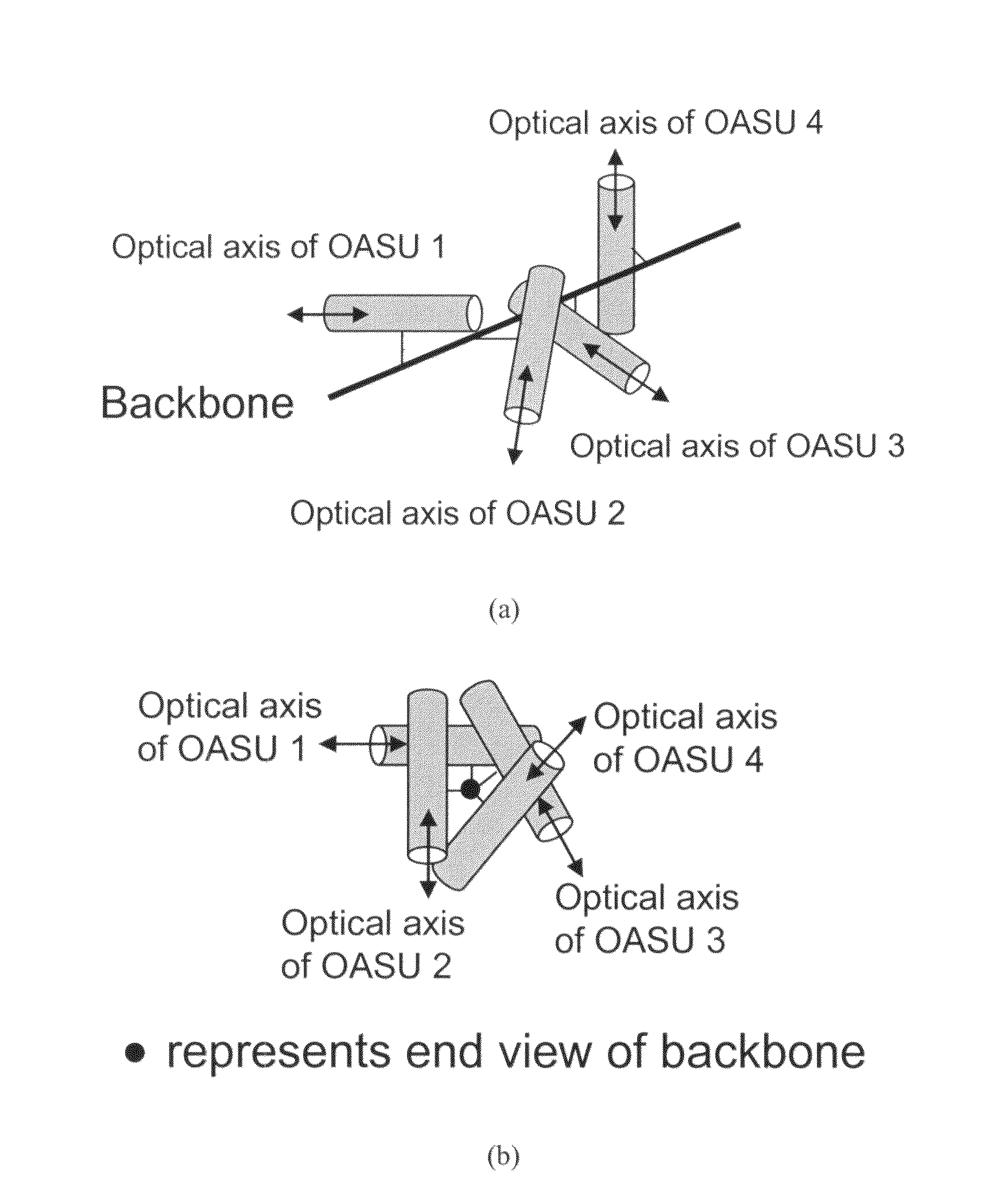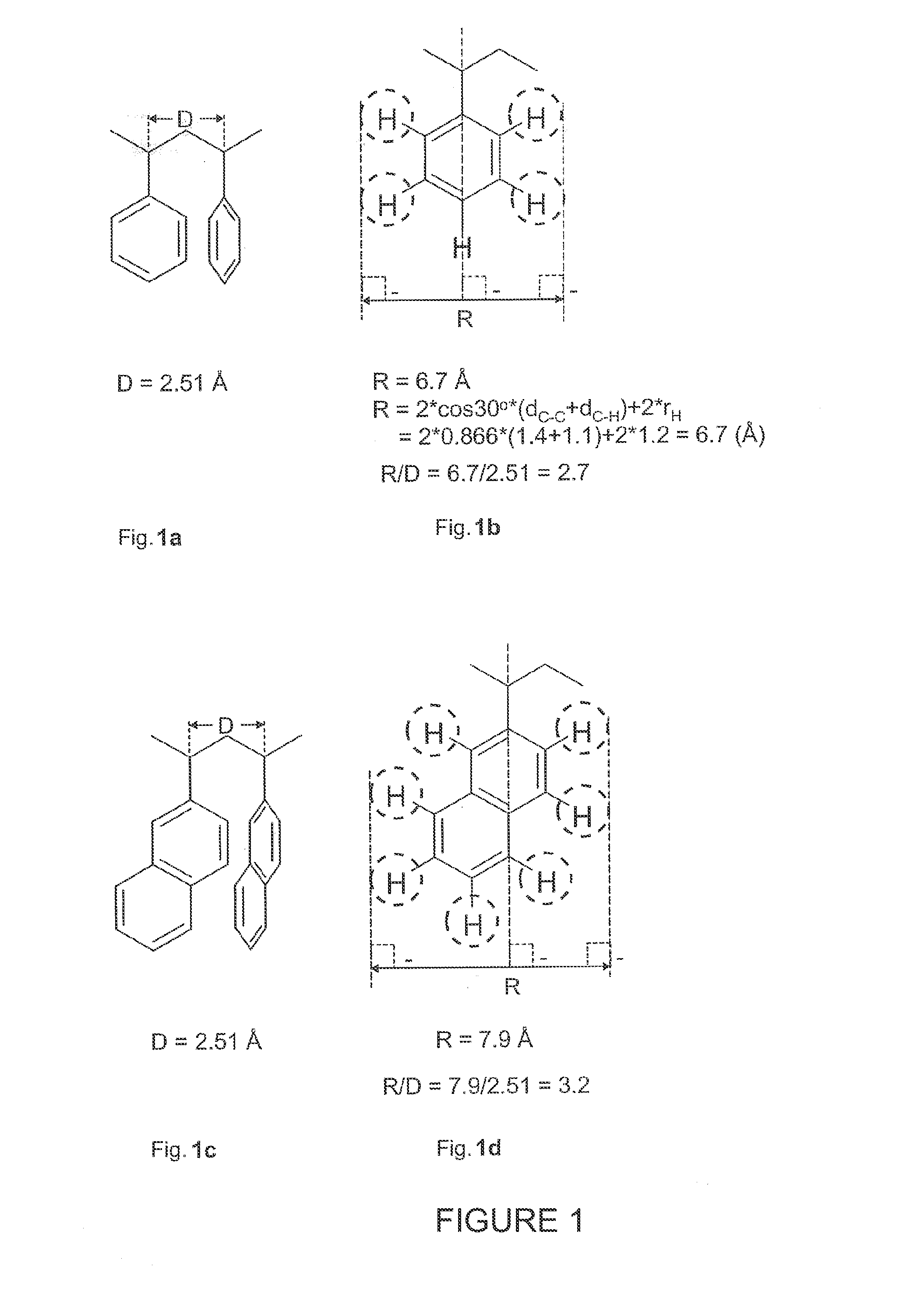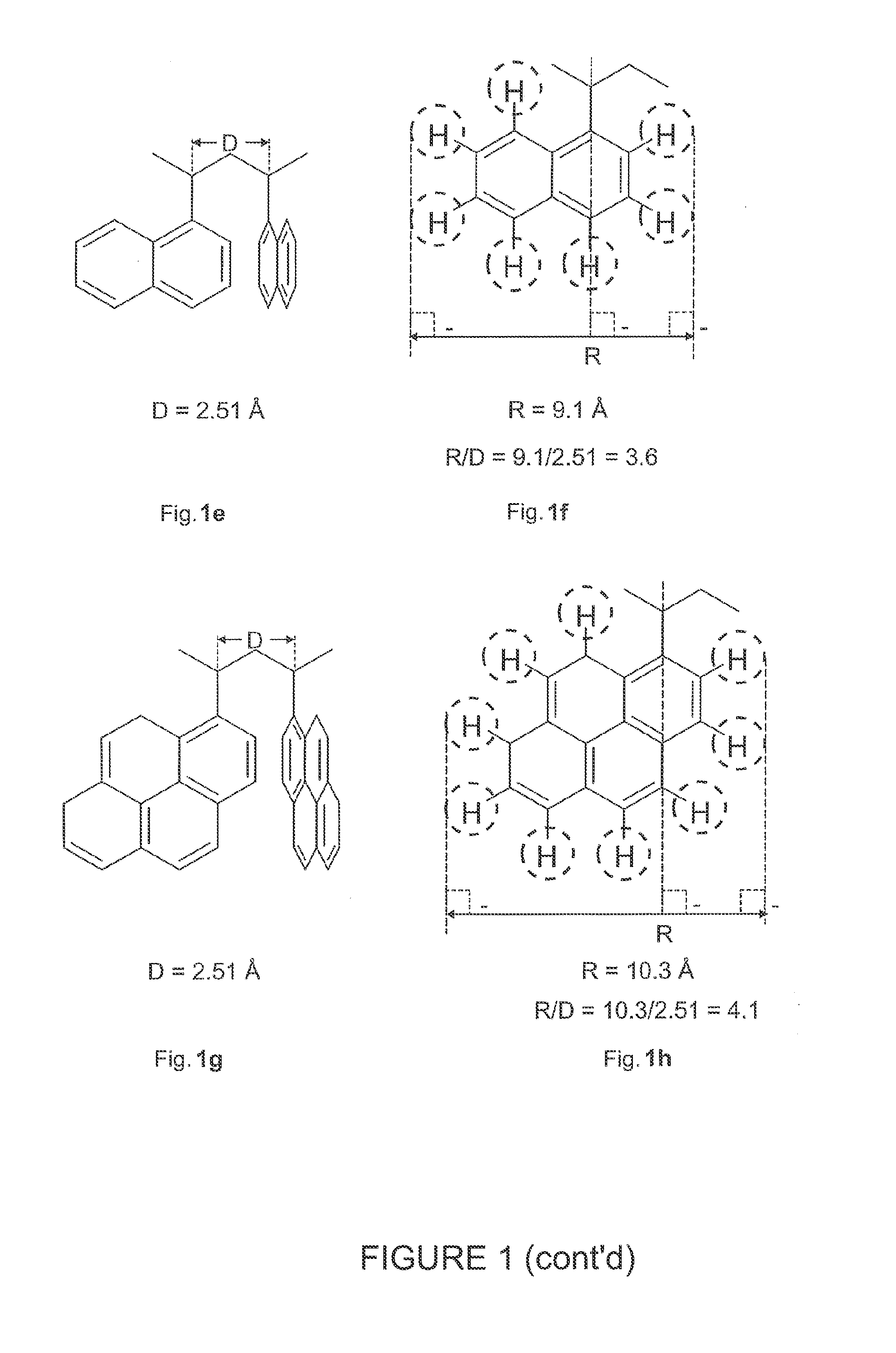Optical compensation films with disk groups for liquid crystal display
a liquid crystal display and optical compensation technology, applied in the field of optical compensation films, can solve the problems of poor image quality at higher viewing angles, reduced image quality and contrast, and limited polystyrene compensation films, and achieves simple solution casting process, reduced film fabrication cost, and high birefringence
- Summary
- Abstract
- Description
- Claims
- Application Information
AI Technical Summary
Benefits of technology
Problems solved by technology
Method used
Image
Examples
example 1
Birefringence Measurement
[0163]Polymer samples were first dissolved in suitable solvents and were solution cast onto a piece of cleaned glass with the size of 1×1.5 inches. The thickness of the polymer film was controlled in the range of 15 to 20 μm by adjusting the content of solid in the solution. After the solvent evaporated, the polymer film was peeled off the glass to obtain a piece of free-standing film. Birefringence of the free-standing polymer films was measured by a prism coupler (Model 2010), from Metricon Corp. at 633 nm.
example 2
Preparation of Poly(2-vinylnaphthalene) by Bulk polymerization
[0164]2-Vinylnaphthalene (2.00 g) was charged to a Schlenk tube. The tube was stoppered, evacuated by pulling vacuum, and then filled with argon gas. The tube was evacuated and then refilled with argon four more times. While under a positive pressure of argon, the tube was immersed into an oil bath maintained at 70° C. for 24 hours. After cooling to room temperature, the solid plug of material was dissolved in tetrahydrofuran (THF). The solution was added in a dropwise manner into 500 mL of rapidly stirring methanol, causing the polymer to precipitate. The precipitated polymer was collected by filtration and dried by pulling air through the material on a filter pad. The polymer was then dissolved in fresh THF and reprecipitated by dropwise addition into rapidly stirring methanol. After collection by filtration and drying, the resulting polymer was found to have MW of 127,000 g / mol and a Tg of 139° C. A film cast from cycl...
example 3
Preparation of Poly(2-vinylnaphthalene) by Solution Polymerization
[0165]2-Vinylnaphthalene (2.01 g), azo-bis(isobuytronitrile) (AIBN, 1.5 mg) and benzene (0.98 g) were charged to a 50 mL round bottom flask containing a Teflon-coated magnetic stirbar. The reaction mixture was degassed by bubbling dry argon gas through the stirring reaction mixture for 15 minutes. The vessel contents were then kept under a positive pressure of argon and immersed into an oil bath maintained at 60° C. for 19 hours. The contents of the vessel were diluted with 25 mL of benzene after cooling the reaction mixture to room temperature. The resulting solution was slowly poured into 500 mL of rapidly stirring methanol, causing the resulting polymer to precipitate. The precipitated polymer was collected by filtration and dried by pulling air through the material on a filter pad. The polymer was then dissolved in tetrahydrofuran and reprecipitated by dropwise addition into rapidly stirring methanol. After collec...
PUM
| Property | Measurement | Unit |
|---|---|---|
| wavelength range | aaaaa | aaaaa |
| glass transition temperature | aaaaa | aaaaa |
| wavelength | aaaaa | aaaaa |
Abstract
Description
Claims
Application Information
 Login to View More
Login to View More - R&D
- Intellectual Property
- Life Sciences
- Materials
- Tech Scout
- Unparalleled Data Quality
- Higher Quality Content
- 60% Fewer Hallucinations
Browse by: Latest US Patents, China's latest patents, Technical Efficacy Thesaurus, Application Domain, Technology Topic, Popular Technical Reports.
© 2025 PatSnap. All rights reserved.Legal|Privacy policy|Modern Slavery Act Transparency Statement|Sitemap|About US| Contact US: help@patsnap.com



